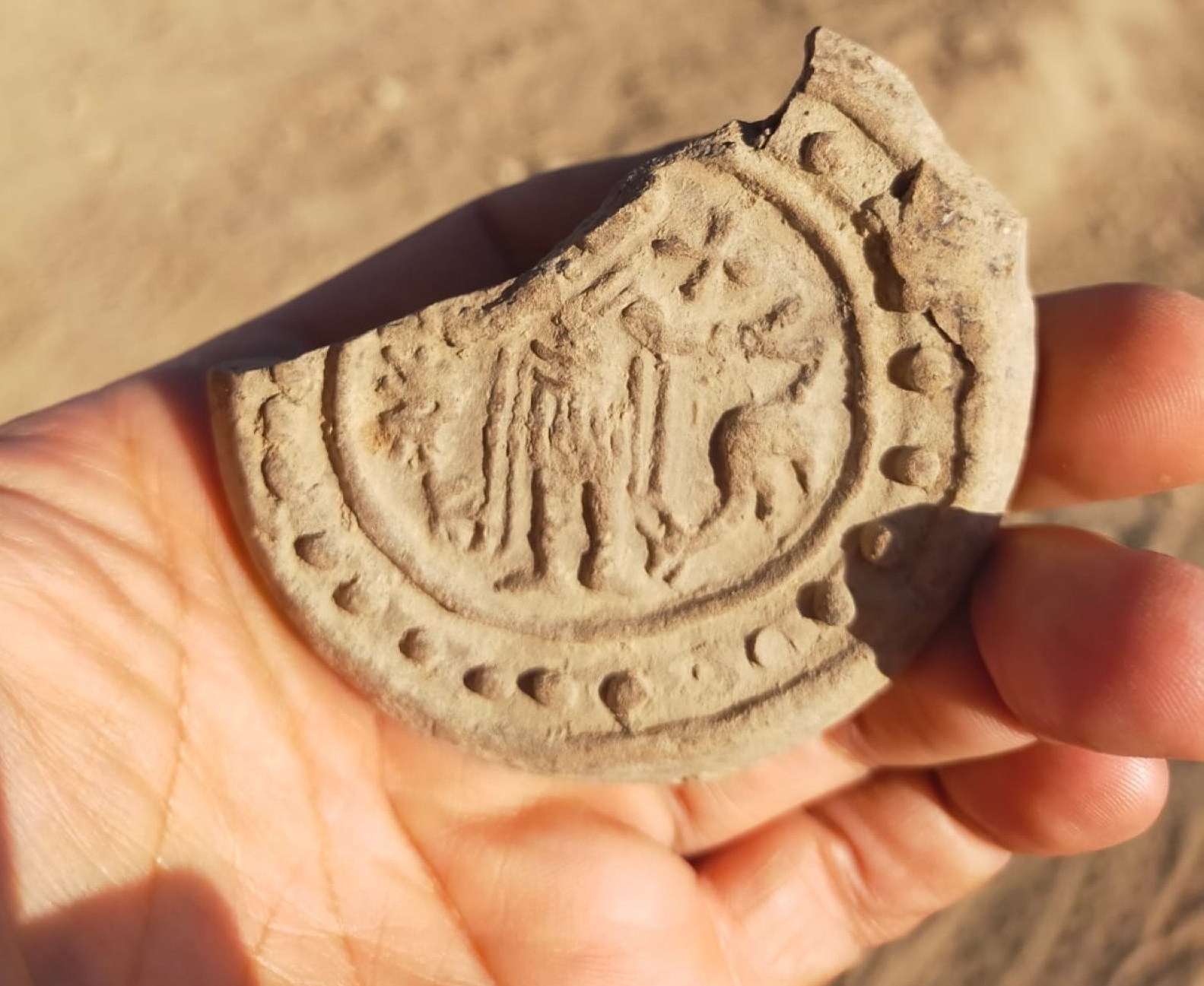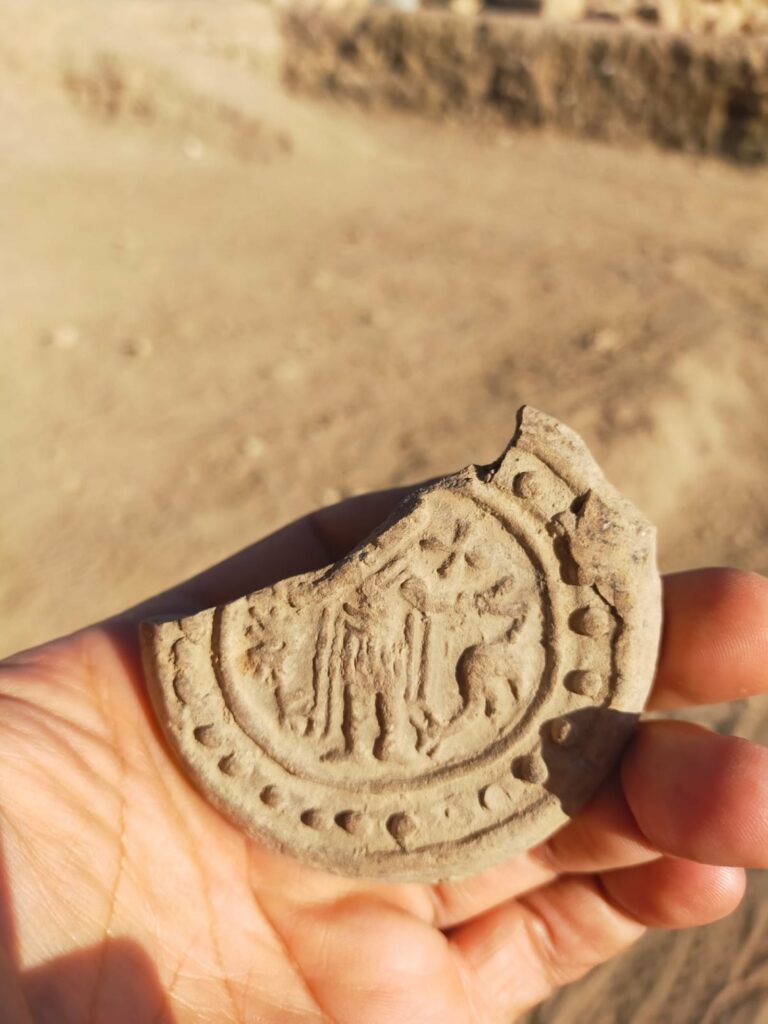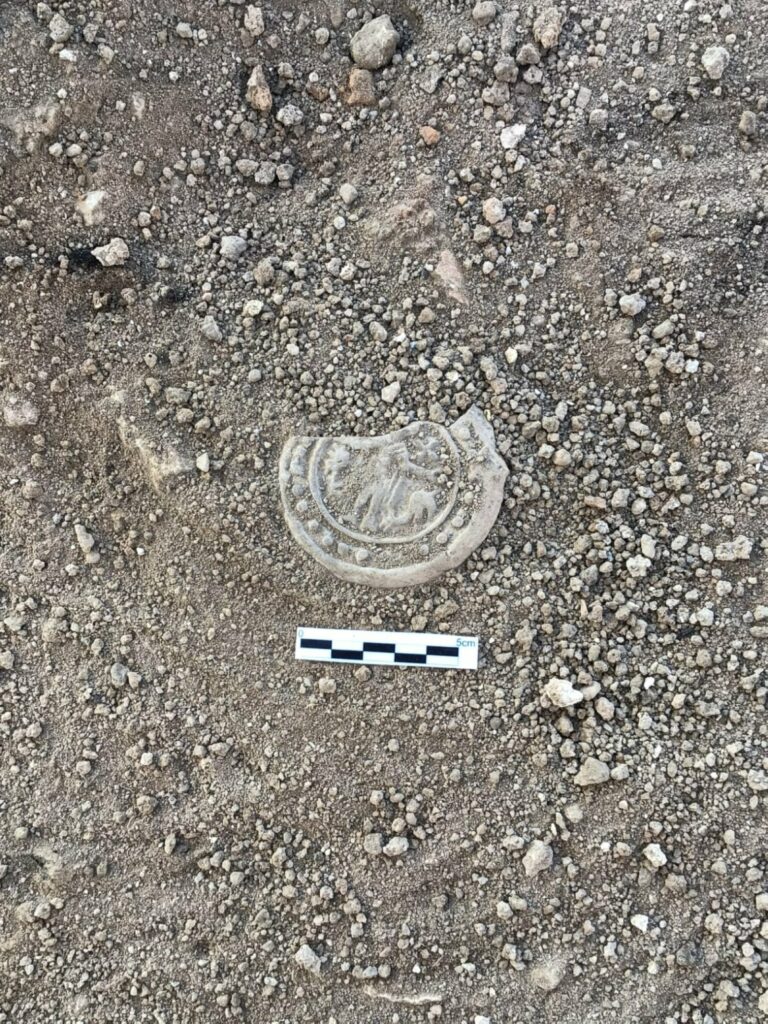During ongoing excavations in the ancient city of Dara, located in southern Mardin province, an ampulla, a small circular vessel with two handles used for spiritual reasons, has been found. The relic, which was judged to be 1,400 years old, depicts Menas of Egypt, a famous Coptic saint who possessed numerous miracles.
For more than 30 years, excavations and research have been conducted in Dara, which is located in the Ouz suburb of Mardin province, around 30 kilometers (19 miles) from the provincial center. The ancient city’s ruins have been compared to the famous city of Ephesus in Turkey’s Aegean region, earning it the nicknames “the Ephesus of Mesopotamia” and “the breadbasket of the ancient Near East.”
The finding of the ampulla is significant since it gives important information about the ancient city’s history. Hüseyin Metin, the excavation team’s leader, revealed that pilgrims used ampullas to transport cosmetic products such as sacred water and oil in the past. This discovery, according to the excavator, demonstrates that a holy pilgrimage from Dara to Egypt took place.
Menas of Egypt and a camel are depicted on the edges of the bowl, and pilgrimage symbols are seen on the top of the 1,400-year-old ampulla. Menas of Egypt, a martyr and wonderworker, was born in Egypt around 1,400 years ago and was killed during the Roman era for his Christian faith.
The material used in the ampulla discovered in Dara is extremely important, according to Metin, because it was made in Abu Mena, Egypt, around 31 kilometers from Alexandria.
He added that apullas can be found in a variety of shapes, notably in western Anatolia, and that those made in Egypt’s Abu Mena region have a highly conventional shape, with few examples in Anatolia.
According to him, the ampulla proves that Dara was a part of a global trade and religious network in the sixth century.
Excavations commenced in 1986
The ancient city of Dara, established by the Eastern Roman Empire to defend their frontier against the Sasanian or Neo-Persian Empire, is a popular photo location for tourists, with many newlyweds utilizing the historical landmark as a backdrop.
The archeological excavations in the ancient city began in 1986, but only around 10% of an ancient village’s territory has been excavated so far.
Archeological digs over a 25-year period gradually uncovered a massive mass graveyard or necropolis.
After 15 year excavations, researchers found a cistern some 25 meters (82 feet) under a village house in Dara, which people refer to as the “dungeon” and has been compared to Istanbul’s iconic Yerebatan Cistern.























